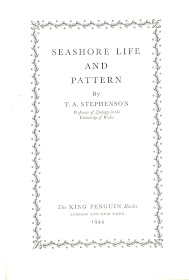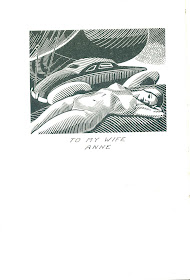Monday, May 30, 2016
Beetle with eyes like pearls
I found this ground beetle, which I'm pretty sure is Abax paralellopipedus, in woodland beside Shittlehope burn in Stanhope, Weardale this morning.
It's a common species but what's unusual about this one is its eyes.
They should be black but these are milky white, like pearls. They don't seem to have the individual facets (ommatidia) that are typical of insect eyes.
I've no idea why this should be but I've had a helpful and rather gruesome suggestion from Dr. Ross Piper
CLICK HERE FOR THE LIKELY CAUSE
Thursday, May 19, 2016
Thanatosis
Thursday's Guardian Country Diary is about thanatosis - the strange behaviour of some animals that pretend to be dead when they are threatened. It's also known as 'playing possum', because its most famous exponent is the Virginia opossum, but many other animals do it, from grass snakes to tiny insects like this vine weevil that I found amongst primroses in a wood in Teesdale.
Vine weevils are notorious horticultural pests because their larvae feed on the root systems of garden plants - especially those grown in pots. The first sign of their presence is wilting of the leaves, by which time they have destroyed most of the root system.
Vine weevils are parthenogenetic, laying fertile eggs without the presnece of a male to fertilise them, so it only takes one weevil to start a pest infestation.
The adult weevil is a slow-moving cumbersome beetle that cannot fly, so when it's disturbed it simply tucks its legs under its body .....
.... and either drops to the ground or rolls onto its back, keeping perfectly still. In this state it's hard to spot in the soil. Eventually, when it thinks the coast is clear, it stretches out a tentative leg, rocks itself until those sickle-shaped claws grip a leaf, hauls itself right-way-up and ambles away.
Thanatosis is very common amongst weevils but it's most lively insect exponent is the click beetle, whose larvae are the notorious wireworms that burrow into potato crops.
These little beetles play dead the moment that they are touched but they revive quickly, in a particularly alarming way.
While they are on their backs a small peg locks the joint between their abdomen and their thorax, so when they flex their muscles great tension builds up. Eventually the attachment between the wing cases and thorax slips and they straighten instantaneously, somersaulting into the air and away to safety. It they land on their backs again they repeat the process, sometimes two or three times until they land right-way-up.
Sunday, May 15, 2016
Conifer pollen
The Korean fir Abies koreana in our garden has been releasing vast amounts of pollen over the last few days.
These are the male, pollen-producing cones near the ends of the branches. Like all conifers it's wind pollinated and the pollen released is quickly diluted in an enormous volume of air, so it tends to be produced in great quantities. If you give the tree a shake it briefly hangs like a yellow cloud in the air.
These are the pollen grains under the microscope, magnified about 80 times.
If you look closely you can see that each pollen grain has two inflated air sacs, which are extensions of the pollen coat. These increase the surface area of the pollen with minimal increase in weight, so enhance its aerial buoyancy.
Click here for more on conifer pollination.
This is where the pollen grains are heading - the new female cone at the top of the tree. Only a few of the pollen grains will successfully complete their journey and fertilise the female ovules, which are arranged in pairs on the upper surface of those whorls of cone scales.
At this time of year they are an attractive shade of purple but by autumn, as they seeds develop, they become brown and then break up through the autumn. Coal tits are particularly partial to the seeds - click here for photographs of them picking the cones apart.
Friday, May 13, 2016
A Marine Biology Professor who loved Curves
The King Penguin series of books, published between 1939 and 1959, covered a very wide range of topics. This is one of my favourites because it seems to have been written by someone who was untroubled by the boundaries between the arts and science.
Seashore Life and Pattern was written by T.A. Stephenson, Professor of Zoology at the University of Wales, and published in 1944.
Thomas Alan Stephenson was born in 1898 and died in 1961. He was a talented zoologist and artist and was a leading authority on sea anemones, writing and illustrating the definitive texts on them. He was elected a Fellow of the Royal Society in 1951. You can read more about his career in science here.
He was clearly someone who appreciated nature for its aesthetic qualities, as well having the enquiring mind of a scientific researcher. He was fascinated by the relationship between beauty in nature and beauty in art.
In his own words, in his introduction " ..... the author of the volume has been painting seashore and other subjects for thirty-five years, and is as much interested in marine life from a decorative point of view as from a zoological."
Stephenson produced all the illustrations for the book - monochrome in the text ....
... and colour plates at the end. He also designed the book cover.
Stephenson's book has one of the most unusual and charming dedications that I have ever some across, and perhaps encapsulates that 'common interest'. Whenever scientists write dedications to those who have inspired them the result is usually interminably tedious and dull but here the author simply chose to illustrate his sources of inspiration, in the shape of the elegant curves of his wife and of a fast car.
You don't see dedications like that in scientific publications these days, sadly.
Thursday, May 5, 2016
Some rather beautiful graffiti ....
Visitors to the National Trust property at Wallington Hall near Cambo in Northumberland usually go to see the very fine garden or the house contents, but for me some of the highlights are the flower paintings on the wall of the central hall of the building.
The hall was formerly the home of the Trevelyan family and in the 1860s Lady Trevelyan regulaly invited her circle of Pre-Raphaelite artists to the house, including John Ruskin, Arthur Hughes and William Bell Scott to stay and to paint on the walls. Scott's main murals show scenes of Northumbrian history and industry but the columns that separate them carry these very attractive flower paintings.
Butterbur's irresistible allure for honeybees
Butterbur Petasites hybridus is a wonderful source of nectar and pollen for bees in spring - especially honeybees. These were feeding on the flowers of a large patch of the plant along the banks of the river Wear at Wolsingham in Weardale.
More about honeybees and the strange distribution of male-only clones of butterbur in today's Guardian Country Diary.
Sunday, May 1, 2016
Johannes Hedwig, moss sexual reproduction and King Penguins
The King Penguin series of books began publication in 1939 and continued through 76 titles until 1959. These slim volumes covered a remarkably wide range of subjects, ranging from ballet to ballooning and from cricket to the crown jewels. You can read more about them here.
Number 57, published in 1950, was A Book of Mosses by Paul Richards.
King Penguins were noted for their beautifully designed covers and this title carried a pattern of stylised moss plants.
In addition to the well written text, this volume contained exquisite illustrations taken from Johannes Hedwig's Descriptio et adumbriato microscopico-analytica muscorum frondosorum, published between 1787 and 1797.
Hedwig's book contained ground-breaking researches on the structure of mosses, using the best microscopes that were available in the late 18th. century. In his day the details of the reproduction and life cycle of mosses was unknown, but his observations led him to speculate, accurately, that mosses carried male antheridia and female archegonia that were analogous to the pollen and ovules of higher plants.
Hedwig was a very acute observer and skilled artist. The plate above shows his observations on the peristome arrangements of moss capsules, Atrichum undulatum (top left); Grimmia apocarpa (bottom right); Tortula rigida (top right); Camptothecium sericeum (centre left); Fontinalis squamosa (bottom left)
Here is Rhacomitrium lanuginosum and ........
.... here's Camptothecium sericeum.
King Penguins cost one shilling each when they were first published and were very popular, so most titles aren't hard to find in second hand bookshops. Many of them cover natural history themes.
You can read an on-line version of Hedwig's original book by clicking here The text is in Latin. The illustrations are astonishingly good, especially when you zoom in on the detail.



































